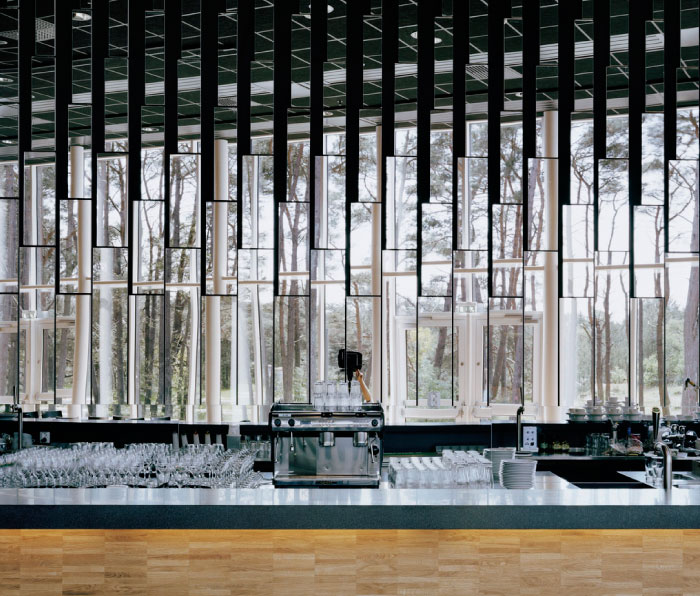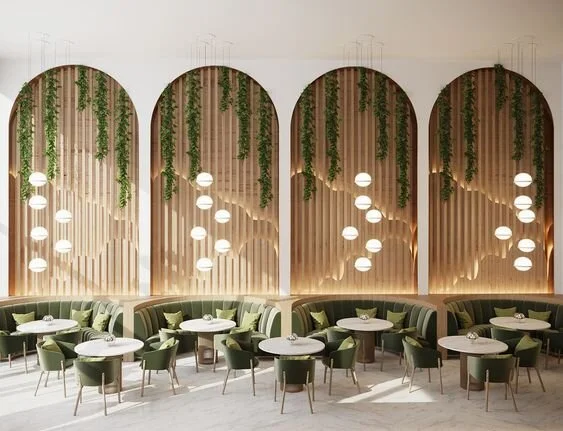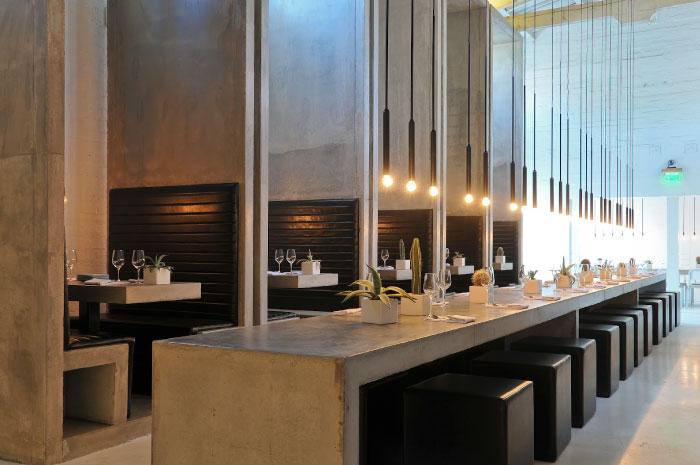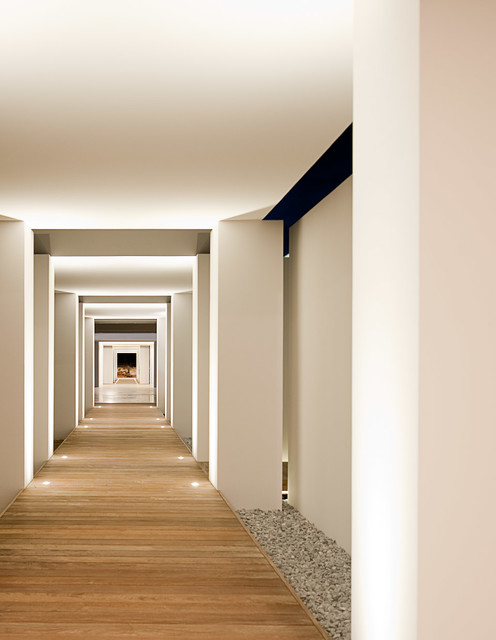But one of our favorite examples of rhythm in this room is found in the decorative pattern on the wall behind the bed above. Rhythm and repetition is the idea of creating movement and harmony throughout your space with recurring patterns colors and different elements.

7 Principles Of Interior Design Contrast Rhythm More Zameen Blog
The more you do the more confidence you will feel about using rhythm in your home and the better decorator you will be.

. Repetition as the name suggests is the repetition of shapes colors forms forms and textures. Put together a small vignette that has great rhythm. The eye wants stimulation and variety but this needs to be balanced with the repetition of other elements.
Transition Curved lines are a good example of this type of rhythm. In interior design there are five principles of rhythm. Similarly how do you get rhythm in.
This includes radiation contrast transition gradation and repetition. Transition Rhythm through transition gently leads the eye through a continuous uninterrupted flow from one area within a space to another. This technique gives a room a clear sense of stability and cohesiveness.
Circular table with a vase of flowers and chairs radiating off the table. A space that has steady rhythm and repetition will lead the eye around. Think of a camelback sofa for example a curved headboard or an archway.
A common example is alternating black and white pillows on a sofa. The eye wants stimulation and variety but this needs to be balanced with the repetition of other elements. In interior design rhythm is all about repetition of design elements that help to create movement within a space.
Repeating a continuous pattern throughout the space to create a sense of stability. You can establish a rhythm by using a color in the pillows picking it up in a painting and echoing it again in a rug. You can also see a rhythm to the blades of the ceiling fan stripes in the rug and the slats of the wooden blinds.
Use opposite elements such as black and white pillows to create a rhythm. Rhythm may be applied in bold statements that make an obvious suggestion about a path of travel or more subtly applied to move your eye about a space without you even realizing the rhythm is there. Repetition and Rhythm in Interior Design.
The importance of rhythm in interior design Rhythm is one of the basic principles in interior design and commonly used to help the eyes move around the room in an organized manner. Transition Curved lines are a good example of this type of rhythm. There is actually more to the interior design theory of rhythm.
Using colors opposite each other on the color. Repetition and Rhythm in Interior Design. Types of Rhythm in Interior Design.
Traditionally there are three types of rhythm you can use in your interior design. Repetition in interior design helps in. Repetition is the repeated use of a particular design element or structure.
In addition to this rhythm plays an important role in interior design as it helps in how the viewer perceives the space in terms of functionality and appearance. Radiation is an element of rhythm in interior design when the features in the room are balanced and repeated around a center point. Put the design element of rhythm into practice.
Or we can use it to influence other emotions. With a curved line your eye gently transitions or travels from one object to another. Discover 20 Questions and Answers from WikiLivre.
For example the eye follows the continuous movement along this hallway through the use of the repeated upright posts and floor lighting. Rhythm with repetition is based on similar lines shapes forms textures colors or patterns throughout an interior. Repetition is apparent in the wooden beams in the lighting fixtures and in the placement of the windows.
The 1st floor of this free standing guest house is all climate controlled wine storage. An example of repetition is pictured above. Rhythm is how well you execute repetition.
Stairs go in a circle around a center point. Repetition can take the form of an exact duplication such as a pattern background image. As designers we can use rhythm to create excitement building gradually over time or reassurance a heartbeat might be perfect on a page aimed at expectant mothers for example.
Opposition Using opposites can create an interesting and pleasing effect in your decor. What is repetition color. Today she will cover the final principal of interior design.
Repeating a continuous pattern throughout the space to create a sense of stability.

Rhythm By Repetition 2 Achieved By Repeating Color Line Form Or Texture Interior Architecture Design Architecture Geometric Interior Design

What Is Rhythm In Interior Design Learn To Apply Tilen Space

What Is Rhythm In Interior Design Learn To Apply Tilen Space

Principles Of Interior Design Part 2 Rhythm

Diving Into The Principles Of Design Ccdg

3 Most Important Interior Design Principles Interior Design Principles Stairs Design Architecture


0 comments
Post a Comment